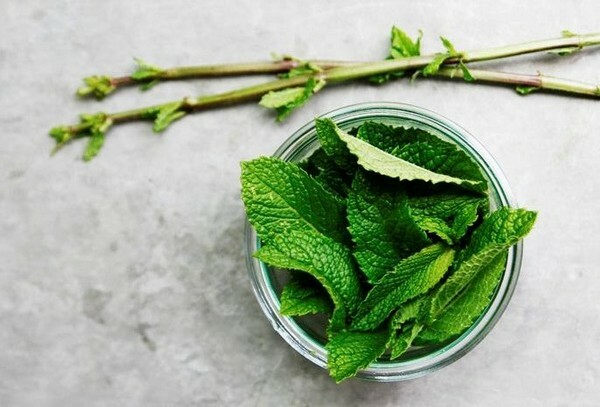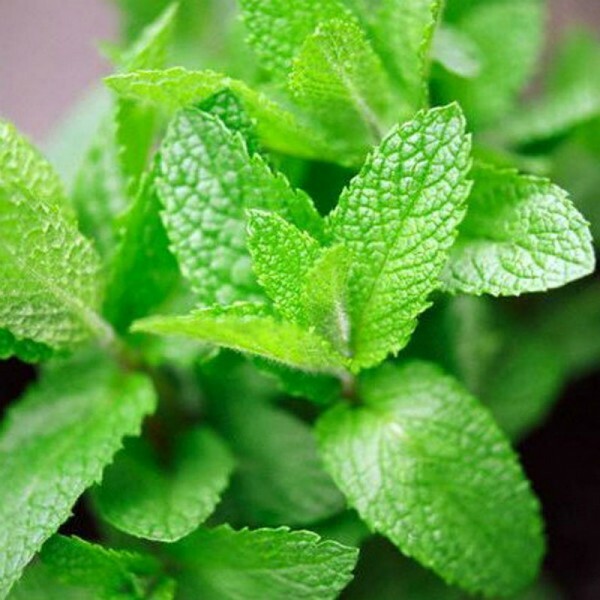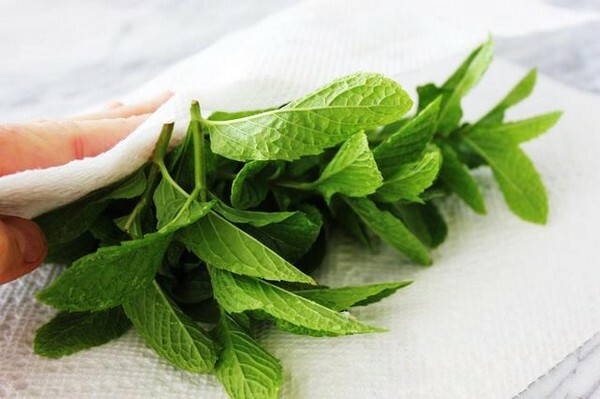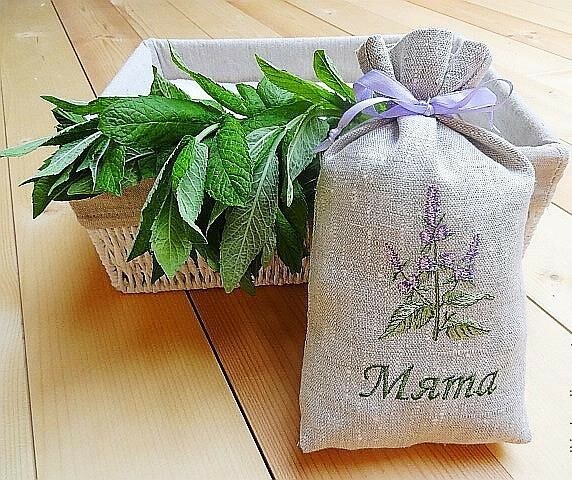- Procurement of raw materials
- Fermentation of mint
- How to get a more tender mint tea?
Peppermint is a very useful plant, the properties of which everyone knows. Initially, it was bred around the XVII century in England, where it was brought to Russia in the 19th century. Today in our country you can find many mint plantations. Since its inception, this herb has begun to actively develop both culinary and medical markets - it was added to various dishes, treated diseases, and the dried product was used to aromatize the air. But most often it was used and used to this day for brewing tea. In general, fermentation of mint - a simple process, but it takes time and knowledge to implement it. Let's figure out how to prepare a fragrant herb for a delicious drink.

Procurement of raw materials
Before you can ferment mint for tea, you need to collect it for starters, of course. And it should be done at a certain time. The most flavorful and tasty is a drink, if raw materials for it begin to be harvested in early summer - in June or in the first ten days of July. In this period the plant is in a flowering phase, and its leaves are saturated with essential oils.
Note! It is after the summer rain, when the sun's rays get on the leaves of the mint, they begin to give the air the most intense flavor! And this is the best time for collecting raw materials!
It is desirable to tear off the leaves at the initial stage of bud formation, but not earlier. Otherwise, the ether components will not be enough, accordingly, tea from such raw materials will turn out not very saturated. A similar result will be obtained if you collect the leaves from mint, which has already faded - raw materials will lose their freshness and intense odor.
Mint preparation should not be carried out both in wet weather and in extreme heat. And in the first, and in the second case, it will quickly acquire an unattractive brown shade.
Recommendation! If the summer turned out to be arid, and there was no rain for a long time, which led to the accumulation of dust on the foliage, before collecting the raw materials, the plants must be washed from a hose or watering can and wait until they completely dry out.

Fermentation of mint
First we want to clarify the question that many lovers of naturaltea and want to choose the most suitable raw materials - can you ferment mint? On this occasion, there are many differences, as it is known that this plant and without fermentation gives the drink a pretty rich flavor. But here, as they say, the matter of taste - someone prefers to drink more "quiet" drinks, someone with an intense smell. However, even in the first case, the fermented mint will not be lost - it can simply be combined with other herbs, each time receiving a new, according to its taste, drink.
So, what is the process of fermentation? His biochemistry is rather complicated, and we will not go into it. We will only say that this is a peculiar process of leaf oxidation, when after harvesting they are somewhat wilted and twisted, as a result of which the integrity of the leaf surface is disturbed and the release of juice begins. In the future, the fermentation process is started.
Note! The process of fermentation is promoted by various bacteria that are found both on the leaf surface and in the air, and after a certain time the mass changes its color and smell!
So, fermentation of mint at home is carried out according to the following scheme.
Freezing
The collected raw materials must be carefully cleaned and rinsed. Damaged leaves, like stalks for fermentation, do not fit, so they are immediately discarded. Then mint should be carefully dried and divided into several identical bundles. Fold them in plastic bags or wrap it in foil and send it to the freezer for a while.
Remember that the packaging must be airtight. If you are not sure of its integrity, it is better to place mint in a separate compartment, away from other products, as the leaves quickly absorb foreign odors.
Plastic containers can also be used. They are tightly closed with lids or, if there is an opportunity to put the raw material separately, cover with a clean towel.

Note! For successful fermentation, the mint should be held in the freezer for at least three hours, but it is best to leave the raw materials for six or overnight!
Fermentation
After the leaves have spent sufficient time in the freezer, they must be removed and transferred to a bowl.
Note! To the touch, the mint will be somewhat moist, since during freezing the juice contained in the leaves freezes and begins to expand. As a result, the cell walls are destroyed, and the juice comes out!
Now the raw materials must be crushed. You can do this with a conventional knife or pass the leaves through a meat grinder. In the latter case, you will receive small, neat granules. Then go directly to the fermentation of mint for tea. We put the received weight in a bowl, from above we establish a press, for example, three-liter jar with water. Leave all three hours. At the end of this time, the crushed leaves should acquire a more intense flavor. We remove the press.
Drying
The fermented mint mass is laid out in a thin layer on a plastic sheet or a large baking sheet.
Please note! Wooden surfaces, for example, a sheet of plywood, or a drying cloth to use it is not recommended, since such materials can absorb a part of the juice, which subsequently significantly reduces the flavor of the drink!
We leave the tray in a well-ventilated room or on the street, only in the latter case it is necessary to build a canopy so that the leaves do not get direct sunlight. After about a day or two, the raw materials will dry, after which it can be expanded in canvas bags or small glass jars and sent for storage.
This is the fermentation of mint leaves for tea ends. Store the prepared brewing preferably in a dry place under a tight lid.

How to get a more tender mint tea?
For those who prefer a more tender mint tea, ferment the leaves in the following way:
- collect mint leaves in early summer, carefully sort them, rinse them under cold water and dry them thoroughly;
- we twist the raw materials in the meat grinder or we rub it with our hands;
Note! When twisting mint through a meat grinder, you can see how its color changes instantly. This is an oxidation, due to which the aroma and taste of the product is enhanced, but not so much as during the fermentation process described above!
- lay out raw materials on food film, wrap it from all sides;
- warm up the oven to 60 °, turn off and send the prepared mint, leave for a few hours or at night;
- after unfolding the film, lay out the leaves on a baking sheet and dry at a temperature of no more than 90 ° for an hour.
Tip! Here you can use the dryer, setting it at about 40-50 °.The aging time is not more than 40 minutes, if it is granules, and about half an hour if the leaves have been grinded. Then reduce the temperature to 30 ° and dry the mint until the end!
Do you need to ferment mint for a long period of time or use the second option - it's up to you. In poorly fermented leaves the smell will be no less intense, but the color of the drink will remain the same beautiful and it will certainly be transparent. To brew it you will need no more than 4 minutes, and as a result you will get a very tasty and useful mint tea.
Stay healthy!
